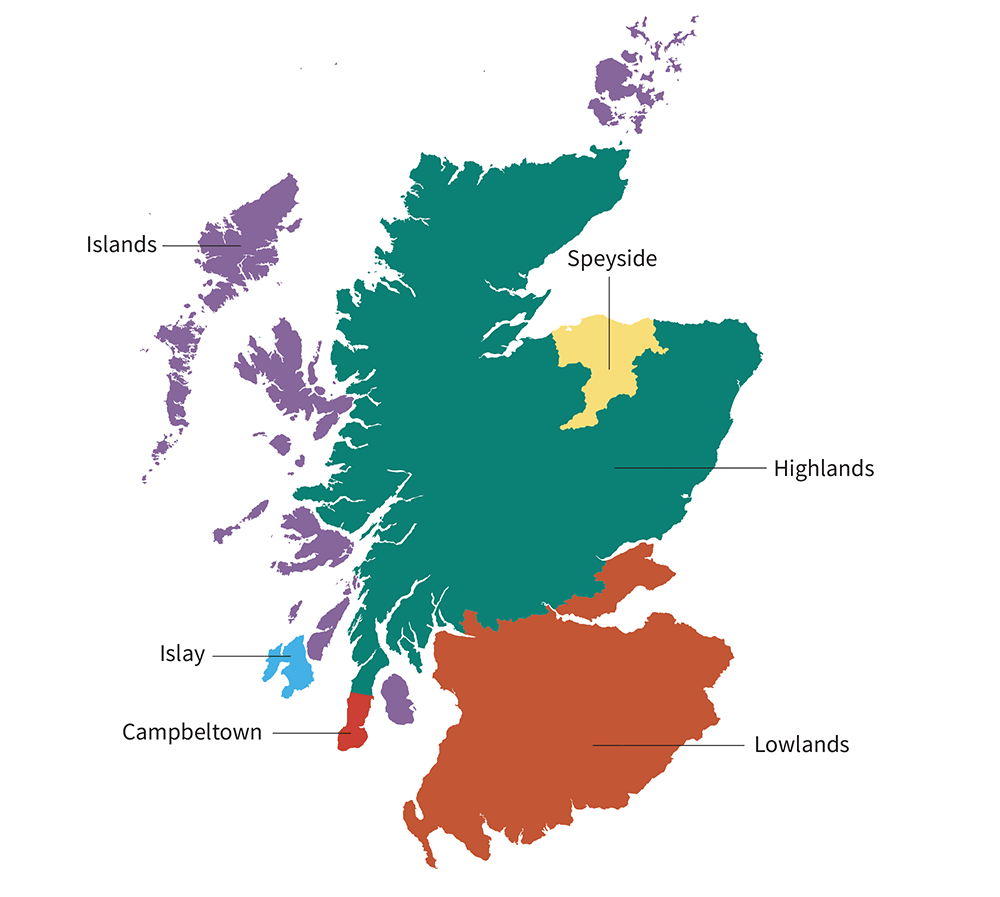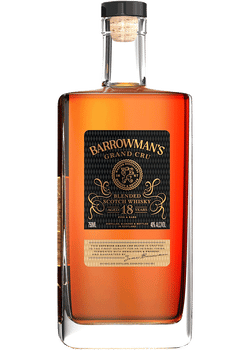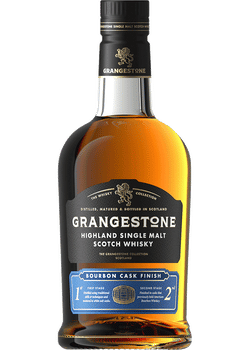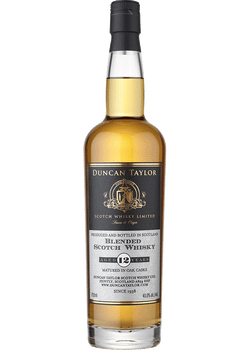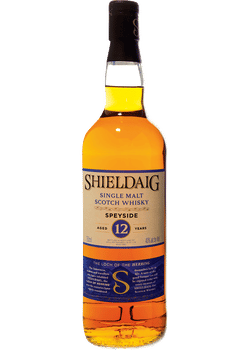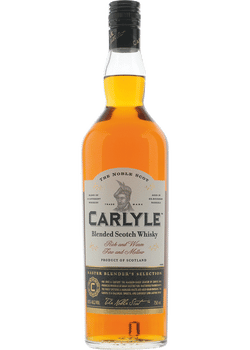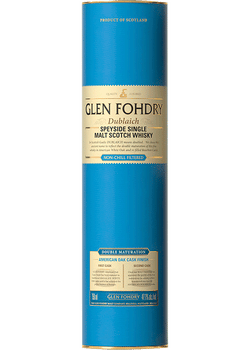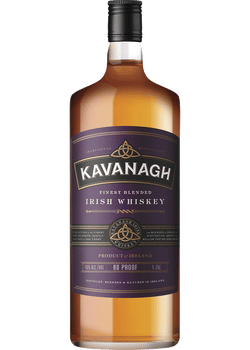What is Scotch Whisky?
Similar to Kentucky bourbon or Champagne, Scotch can only be labeled so if it is made in a certain area. In this case, that area is the country of Scotland. That’s right, all whisky made in Scotland is Scotch, but that is only one of many specific production regulations required. Let’s get to know more about our good friend, Scotch.
Fun Fact:
If you ask for a whisky in England, you’ll get Scotch.
But in Ireland, you’ll get Irish Whiskey.
Regions
Whisky producers dot the Scottish landscape with more than 100 distilleries divided among five defined whisky regions. Although these are not official regions, it always helps to use geographical boundaries as a guide for the types of Scotch styles and tastes.
Highlands
Stretching from the farthest point north to just south of Scotland’s mid-section, Highlands is the largest and most northern mainland region for Scotch producers. The rugged landscape delivers a wide range of styles, from malty, peated, and smoky whiskies, to light, grassy, floral, and elegant styles.
Highland whiskies:
Lowlands
Comprising roughly the southernmost third of Scotland’s mainland, the Lowlands region, filled with rolling hills, includes the fewest of Scotland’s distilleries. With some notable exceptions, Lowlands distilleries generally produce light spirits made from large stills.
Lowlands whiskies:
Speyside
Sharing part of Scotland’s northeastern coast, Speyside is contained within the Highlands along the valley of the River Spey. This region includes the nation’s highest concentration of distilleries, which produce many high-quality single-malt whiskies as well as other Scotch styles.
Speyside whiskies:
Campbeltown
Once a whisky-producing powerhouse, this tiny region on the Kintyre peninsula in southwest Scotland was a top producer with dozens of distilleries a century ago. But worldwide economic conditions in the early 20th century, along with Prohibition in the United States, took their toll. Today Campbeltown is home to just three distilleries.
Campbeltown whiskies:
-
Glengyle
Islay and other Islands
Islands surrounding the mainland also produce Scotch, particularly the island of Islay (EYE-lah), which lies off Scotland’s west coast. Locals have traditionally relied on peat for fuel and whisky production, resulting in robust and seaweed-heavy, peaty influences in most Islay whiskies.
Islay and Island whiskies:
Basic Scotch styles
All Scotch varieties fall within two broad categories or are blends of these two: malt whisky and grain whisky. Malt whisky must be 100 percent malted barley. Grain whisky may include wheat, rye, corn, or other grains.
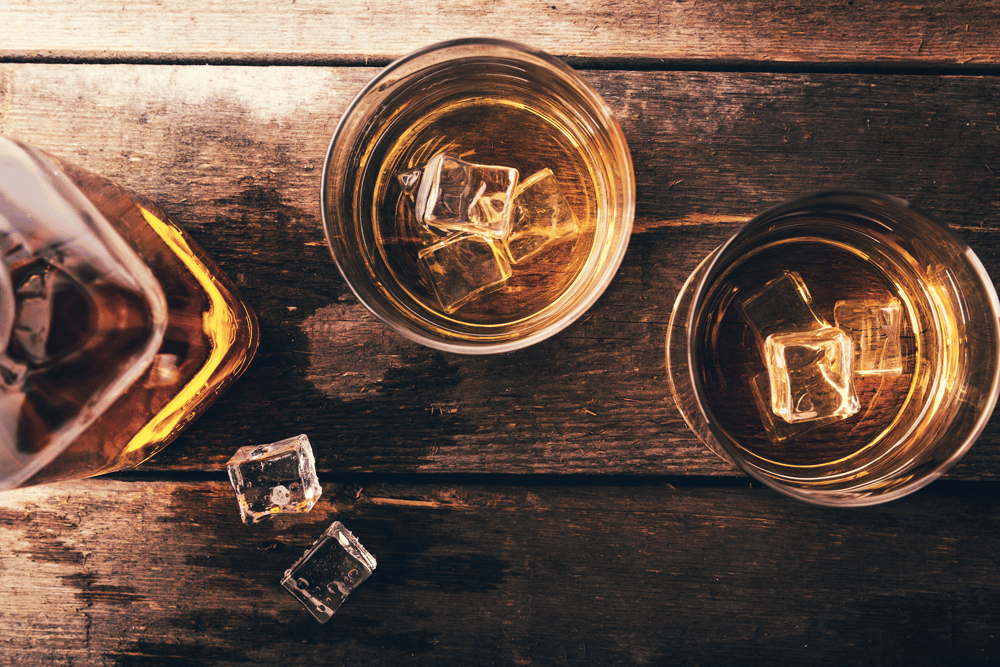
Malt whiskies
Long story short, malt whisky is whisky made from a fermented mash mainly consisting of malted barley. The malting process begins with soaking barley for two or three days. Then, traditionally, a maltster would spread a layer of wet barley on a concrete floor in rooms with controlled humidity and temperature. The maltster would then manually rake the malt to release heat created by the germinating kernels. The germinated or “green” malt is then dried and browned in a kiln.
After browning, the malt is ground into grist and mixed with hot water to convert starches into sugar. The resulting sugary liquid, or wort, is then fermented into the distiller’s beer, known as the wash. This mix usually undergoes two or three rounds of batch distillation in pot stills designed in various shapes and sizes, which also influence the final product. By the end of the second distillation, the spirits may be as much as 95 percent alcohol by volume.
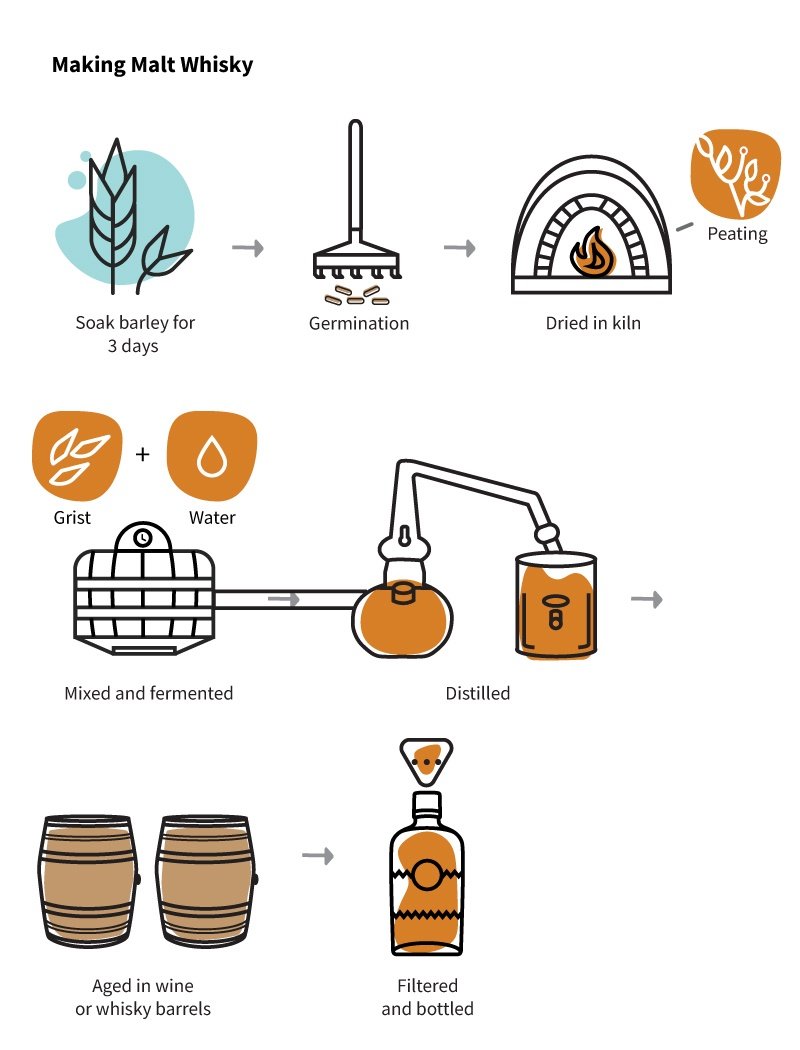
Grain whiskies
Compared to malts, Scotch grain whiskies are a lighter style and higher in alcohol. In blends, grain whisky complements the malt’s complex flavors. The base ingredients for Scotch grain whisky include wheat, rye, and/or corn, plus a small amount of malted barley, which provides enzymes necessary to release sugars for fermentation. Each grain imparts different flavors: Wheat can provide a soft flavor that suggests honey, rye will have a spicier kick, corn can have sweeter notes. Scotch grain whisky distillers use column stills.
Peating
Some Scotch whisky makers heat their kilns with peat, the dense, earthy layers of partially decayed organic matter derived from plants such as heather, moss, grass, and seaweed that has become compacted over thousands of years. As much of Scotland sits atop such peat, blocks of peat cut from the ground have long been a local source of energy. When peat burns, it emits a pungent smoke that adds flavor to the barley, which further develops during fermentation and distillation, giving many Scotch whiskies their unique earthy, smoky, and “peaty” flavor profiles.
Aging process
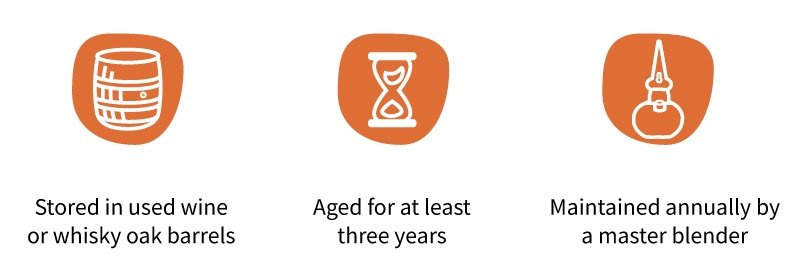
All Scotch is aged in oak barrels that have already been used in wine or whisky production. It must age at least three years, but many Scotches age more than a decade to enhance and define the style. Much of whisky’s flavor and color comes from this barrel-aging, so the longer it is aged, the fuller the flavor will become.
Before bottling, producers may filter the Scotch through charcoal, and reduce its alcohol levels by adding water. Some may add a small amount of caramel for additional color. Last, combining the various malts and/or grain whiskies that can make up a blended whisky is a critically important and challenging step for what is known as a master blender.
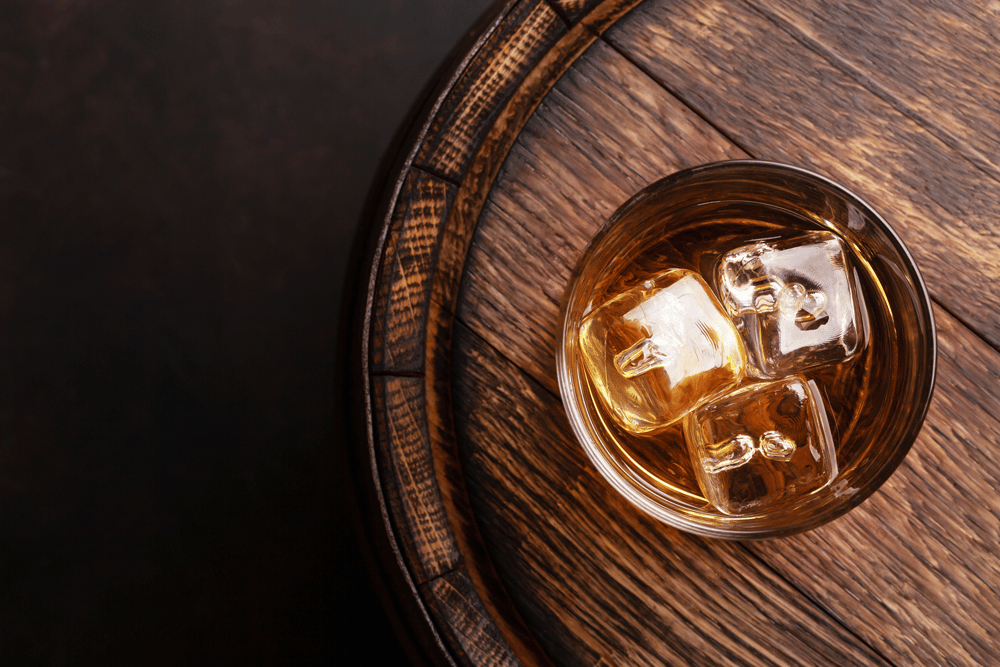
Blending is allowed
Scotsman Andrew Usher pioneered mixing grain and malt whiskies together, creating blended whisky in 1853. Blending revolutionized the distilling industry, creating smoother and milder whiskies than Scotland’s traditional malt whiskies. Other master blenders, such as Johnnie Walker, John Dewar and James and John Chivas followed suit, founding some of the world’s most famous Scotch brands. While there are examples of 100 percent grain whisky, most Scotch grain whisky is blended with malts to make blended whisky.
More recently, Dr. Bill Lumsden, Director of Distilling, Whisky Creation and Whisky Stocks for Glenmorangie became a pioneer of extra maturation. Not only was he awarded IWSC Master Distiller of the Year in 2016, 2017, and 2019, Dr. Lumsden was also recognized as an innovator in extra maturation techniques. He pioneered the use of ex-wine barrels to add additional flavors and complexities to whisky!
Fun Fact:
The master blender must have considerable skill to achieve a specific style from the mix, and maintain it year after year. Even single malts are generally blended with other vats to ensure consistent quality and style of the final product.
"e" or No "e"
You might notice that whisky here is spelled without the “e”. Technically, both spellings are correct! Depending on the area of the world you’re in, the “e” may be there, and it may not. Here are some countries that use the “Whisky” spelling.
-
Japan
-
Canada
-
India
-
Scotland
How to drink Scotch
Each Scotch has its own flavor profile, but there are a few consistent tasting notes you will be able to recognize. Typically a Scotch will have anywhere from 3-5 of the following:
Tasting notes
![]()
There are three ways to enjoy Scotch: neat, on the rocks or with water, or in a cocktail.
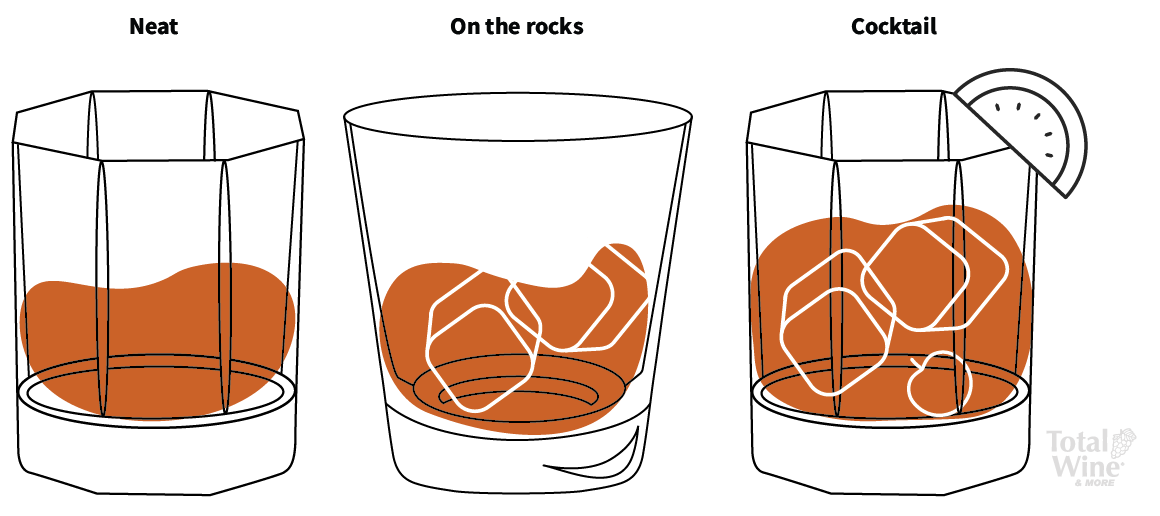
As a whisky, the most traditional way to enjoy Scotch is “neat”. Simply pour some Scotch in a lowball glass by itself. No mixers, no ice, nothing — just enjoy sipping.
On the rocks is a fancy way to say “add some ice”. A smokey Scotch over some ice will dilute the spirit, taking the bite off. Others say to just add a splash of water, that way the Scotch can stay at a warmer temperature than it would with an ice cube.
A good Scotch doesn't need anything else, but some people love the art of cocktails. Popular drinks include the Scotch Old Fashioned and Rob Roy.

